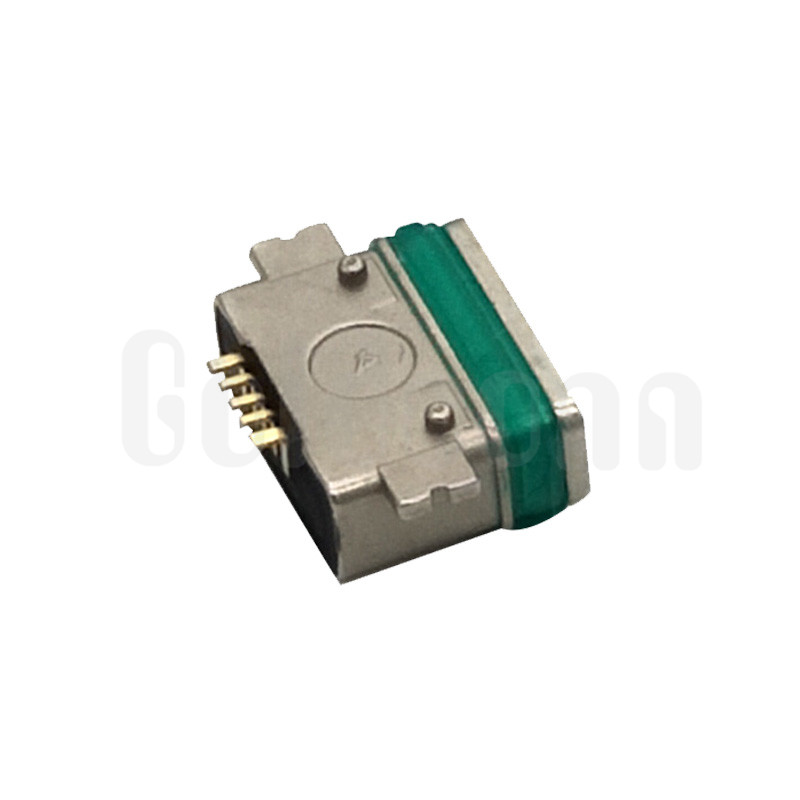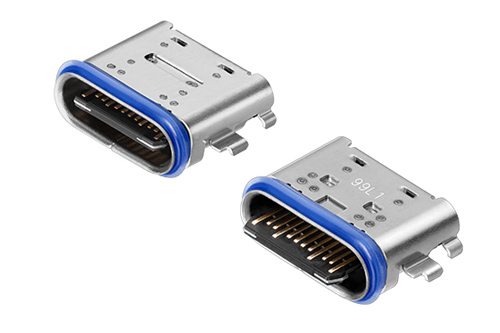Views: 44 Author: Site Editor Publish Time: 2022-08-04 Origin: Site
Electronic devices have filled all aspects of our lives with the development of technology and techniques. They have become an inseparable part of our daily lives. Therefore, electronic devices are often encountered in our daily lives and various disasters, such as spills or even when dropped into the water; this is a frequent danger to electronic devices, so waterproof function has become an essential indicator of today's electronic devices. This indicator is also dispersed to its various components, the connector is one of them.

USB Type C connector is now the most popular electronic equipment connector, so are USB Type C connectors waterproof?
USB Type-C is the type with a waterproof function. However, not all styles of USB Type C are waterproof. IPX8 rated waterproof USB Type-C connectors are increasingly in demand to meet customer requirements. (IPX8 rated waterproof: those connectors that are tested to prevent water entry in up to one meter of water)
USB Type C connector manufacturer Goldconn will talk to you through this article about the advantages of USB Type-C connectors and the selection and design considerations for using waterproof USB Type-C connectors.
Waterproof electronics are a dominant trend in the consumer device industry as users want to be able to carry their phones, tablets, watches, displays, and other small electronics with them. Manufacturers of the iPhone, Samsung Galaxy, Huawei high-end phones, and other smartphones advertise the water resistance of their products to consumers. This desirable attribute applies to other products such as electric shavers, electric toothbrushes, point-of-service terminals, wearable devices, and automotive, medical, and industrial products. The last thing users want to worry about is the environmental sensitivity of electrical products, especially in environments where water is a hazard.
In a fast-paced era, users want products that transfer and charge data faster. The market is transitioning from Micro USB to USB Type-C because it has 10 times its predecessor's power and data rates. For example, a product with a USB 3.0 Micro USB connector may use 0.9A to charge, while a USB Type-C connector can use up to 5A to charge faster. In addition, while Micro USB data transfer rates are in the 5Gb/s range, USB Type-C data transfer can provide speeds of up to 10Gb/s. This additional speed can make a big difference when transferring large files from one device to another.
In addition, ease of use is a constant goal for consumer product designers. USB Type-C connectors are easier to use than Micro USB because they offer reversible or flipped insertion, so they do not require a specific connector orientation when inserting them into a device port.

When designing and customizing USB Type-C connectors for electronic devices, how do we choose the product that will satisfy us? Professional designers give the following three key reference factors.
• Signal Integrity
• Power
• Environmental Protection
Signal Integrity: Higher signal integrity equals faster data rates, so USB Type-C products with the best signal integrity are preferred and should be rated for USB 3.1 performance. USB Type-C ports can run at 5Gb/s, but some manufacturers leverage their experience with previous data products to deliver 10Gb/s throughput.
Power: USB Type-C products can transfer more power - up to 100W at 5A compared to 10W at 0.5A in Micro USB systems - so devices can charge faster, assuming the rest of the system is designed for faster charging.
Environmentally friendly: To meet the environmental requirements of users, waterproof USB Type-C connectors are water resistant using rubber seals and seamless housings. These connectors should have a waterproof performance rating of IPX8 (according to IEC 60529) and be durable enough for thousands of plugging and unplugging cycles. The added board retention feature contributes to a robust design that provides high reliability and overall device quality.
Conclusion
USB Type-C connectors with IPX8 water resistance are becoming the new standard for various products as they offer reliability, faster charging, and faster data transfer. Micro USB has a long history of providing connectivity for variousvarious products. Still, USB Type-C is the connector of the future.
Dear friends, We are pleased to invite you to attend PCIM EUROPE 2025 EXHIBITION. Goldconn will be showcasing our latest innovations and technologies at Hall 6, Booth 300, which will be held at the Nuremburg, Germany, from 6th to 8th May 2025.
The Qingming Festival is an important traditional festival in our country.
https://goldconnhk.com
In order to ensure the safety of employees in the operation of equipment, our company will often hold safety production training to enhance employees' safety awareness and operation norms
Many machine parts that are important for repair and replacement are the product of metal fabrication. The importance of metal fabrication in manufacturing and industry cannot be overstated. This process plays an essential role in manufacturing and is often the foundation and support for sheet metal
USB connectors were introduced in the mid-1990s and have since evolved in size, shape, and data and power transfer capabilities. Today, the latest physical standard is Type C. In addition to greater bandwidth and bi-directionality, and reversibility, this latest iteration is capable of significantly
Many people refer to welding and metal fabrication as if they were two different words for the same process. While both processes require the use of metal, the terms are not interchangeable. Metal fabrication can be described as the process of making a product from metal. Welding is usually a part o